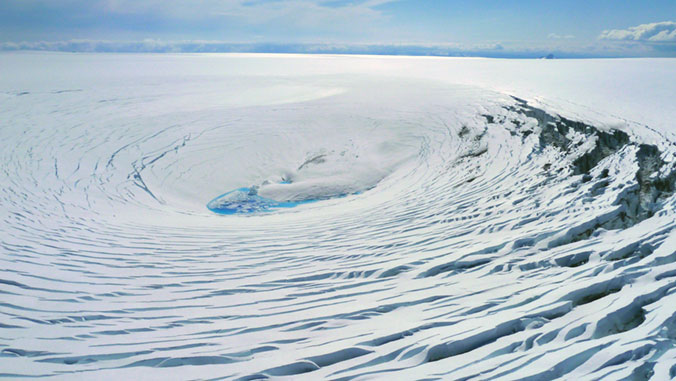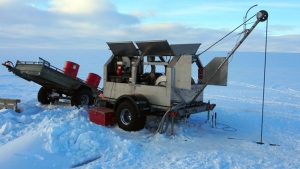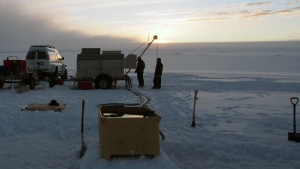
A long-standing mystery involving floods or “jökulhlaups” that emerge suddenly and unpredictably from glaciers or ice caps was serendipitously solved by a team led by University of Hawaiʻi at Mānoa astrobiologist and Earth scientist Eric Gaidos. The findings were published in Geophysical Research Letters.
This mystery occurs in Iceland where volcanic heat melts glacial ice and the water accumulates in lakes underneath the glaciers. Scientists have long studied the development of these floods, which are some of the largest on Earth.



“These floods may affect the motion of some glaciers and are a significant hazard in Iceland,” said Gaidos, a professor at UH Mānoa’s School of Ocean and Earth Science and Technology (SOEST). “But the mechanism and timing of the initiation of these floods have not been understood.”
Then, in June 2015, an unexpected series of events revealed how these floods start.
That summer, Gaidos and colleagues drilled a hole to one of the Icelandic lakes to study its microbial life. While collecting samples through the borehole, the team noticed a downwards current, like a bathtub drain, in the hole.
“The flow was so strong we nearly lost our sensors and sampling equipment into the hole,” said Gaidos. “We surmised that we had accidentally connected a water mass inside the glacier to the lake beneath. That water mass was rapidly draining into the lake.”
A few days later, after the team had left the glacier, the lake drained in a flood. Fortunately, the flood was small and Icelanders have an elaborate early-warning system that monitors their rivers so no people were hurt, nor infrastructure damaged in this event.
The researchers used a computer model of the draining of the flow through the hole, and its effect on the lake, to show that this could have triggered the flood.
“We discovered that the glacier can contain smaller bodies of water above the lakes fed by summer melting,” said Gaidos. “If this water body is hydraulically connected to the lake then the pressure in the lake rises and that allows water to start draining out underneath the glacier.”
For more see SOEST’s website.

